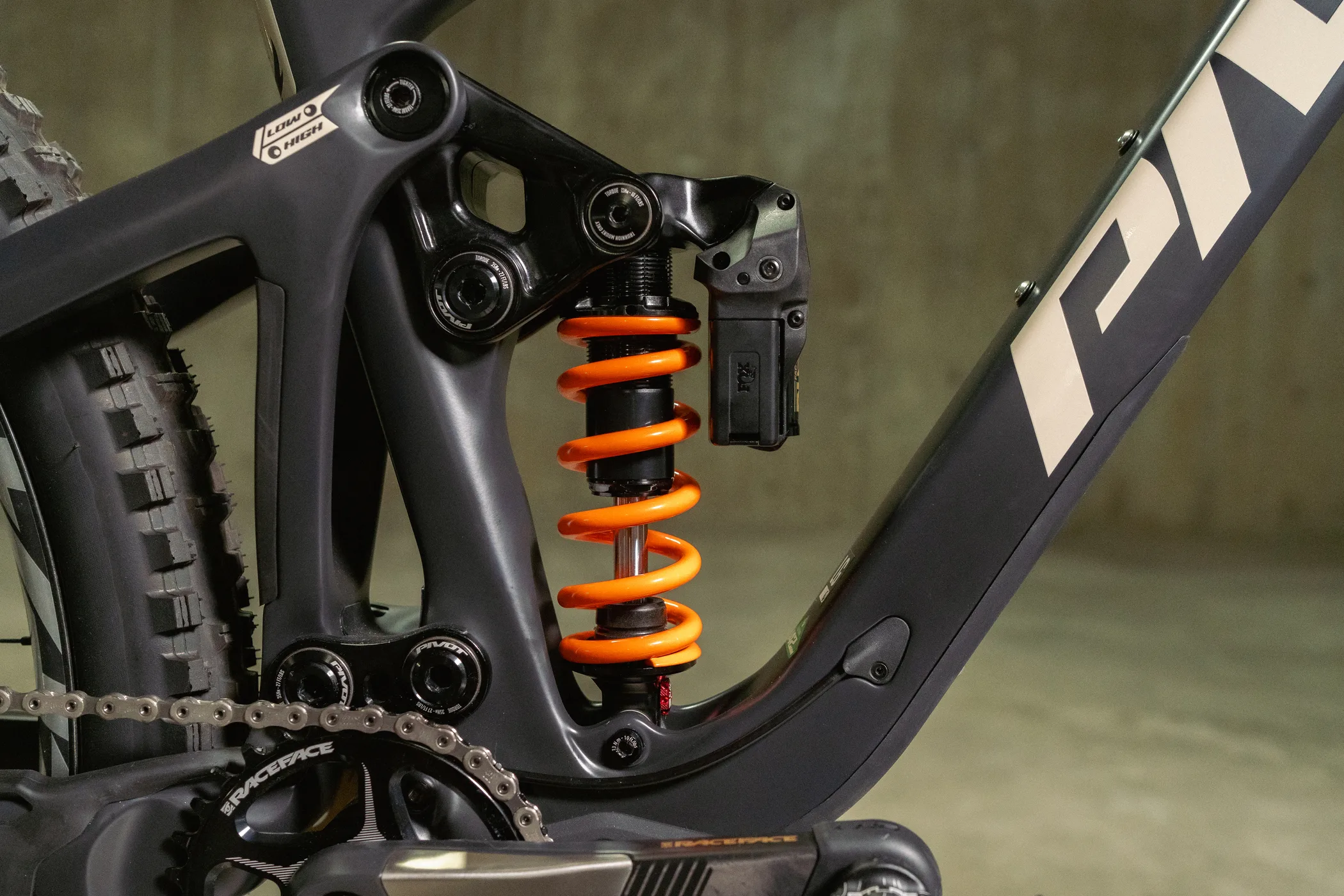After launching the Fox Neo dropper post last month, Fox updated their bike app to allow users to connect and tune the dropper posts. But the header image on one of the pages featured a picture of not only a dropper post but a rear shock too. Now, Fox has revealed the details of that shock – introducing Fox Live Valve Neo.
First introduced in 2018, Fox Live Valve attempted to usher us into the modern era of electronically controlled suspension. At the time, the only way for the system to communicate fast enough was to rely on wires to connect all the components. It also included electronic suspension control for the Fox-only fork and a fairly large battery. All of these things combined led to limited adoption of the Live Valve system. Which brings us to Neo.
On the surface, the general idea of Live Valve Neo is the same, but it goes about it in a more simple and universal way. Most obviously, the system is now without any wires. That’s thanks to Fox’s in-house wireless communication protocol which is claimed to deliver signals from the fork and rear sensors to the controller “in around one millisecond.” Fox points out that the latency, or delay of data transfer for standard Bluetooth can be up to 200 milliseconds.
That speed means a Live Valve Neo system can sense a bump and then open the controller on the shock in about 1/70th of a second.
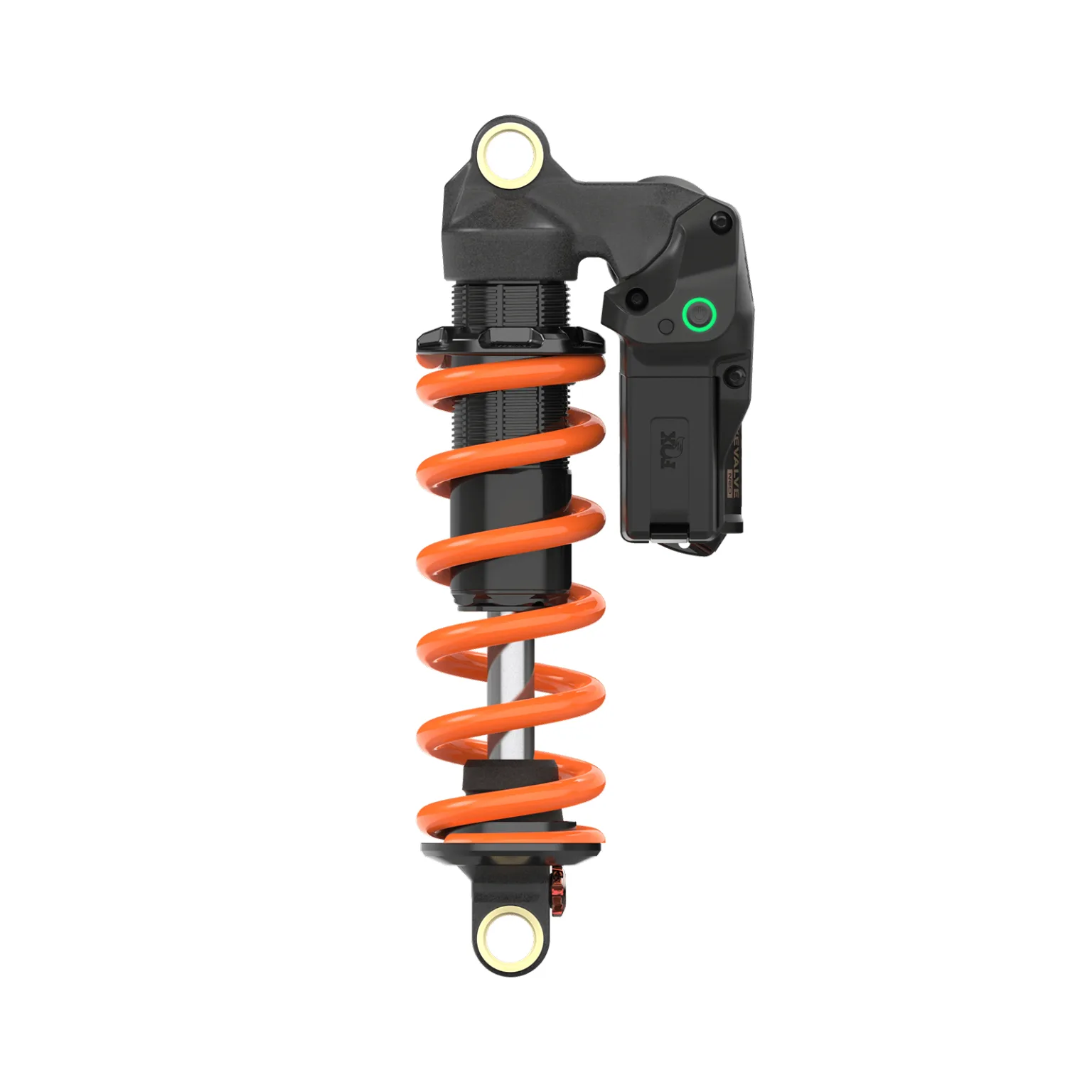
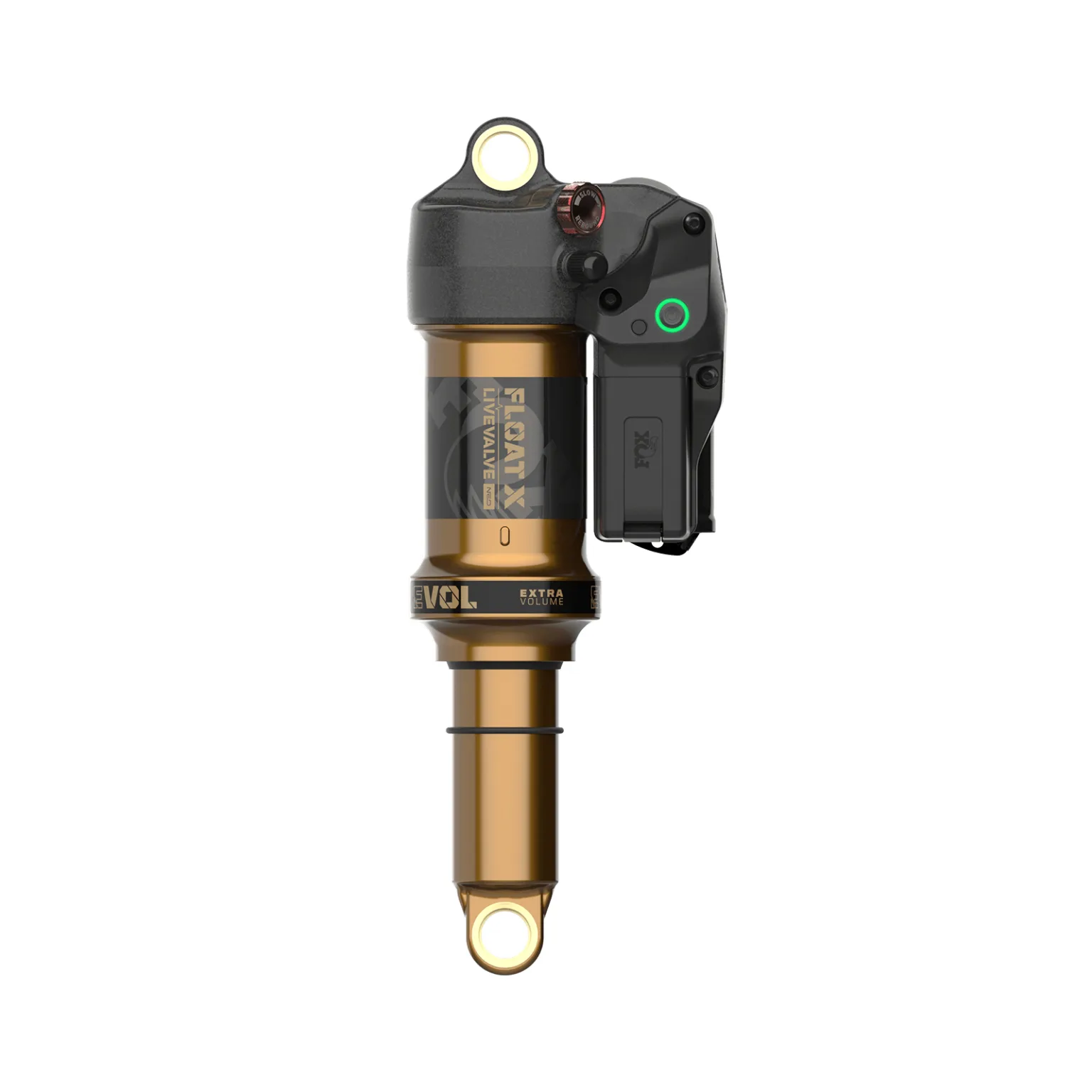
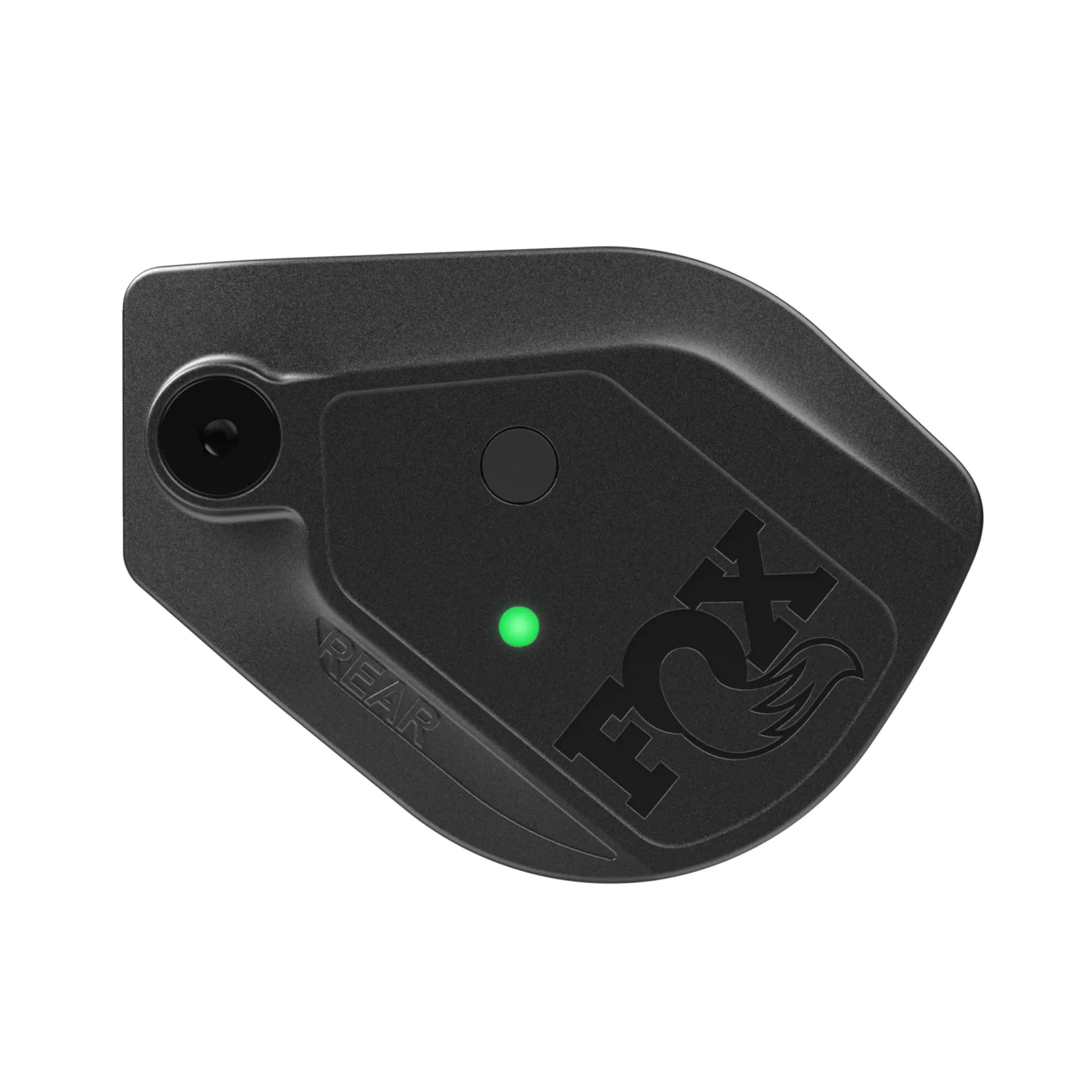
You’ll also notice that the Neo system does not include any electronics for the fork, only a fork sensor that’s compatible with many different brake calipers. Where the original Live Valve system tried to lock out and control the fork as well as the rear shock, Fox has designed Neo only around the Float X and DHX rear shocks which are meant for Trail and All-mountain riding. They claim that the majority of on-trail efficiency is gained from the rear suspension, and “any delay in the Opening of a fork’s compression circuit — even 1/70th of a second — would be noticeable to riders.”
Compared to Gen 1 Live Valve, Neo also includes a new high-flow solenoid with a 2-position magnetic latch. This is said to move faster than a motor, with the added benefit of being quiet. Fox also states that pitch detection has been improved, specifically for trail switchbacks with an incline sensor built into the fork sensor.

As a result, Live Valve Neo is also compatible with nearly any suspension fork, not just those from Fox. Simply mount the fork sensor to the front brake caliper, and you’re all set up front. There is also a sensor mounted to the rear brake caliper. Including the rear shock, Neo consists of just three physical components – four if you consider the Fox App (which isn’t needed while riding).
Live Valve Neo also relies on the same lithium battery and charger that’s used for the Transfer Neo, with USB-C charging. These batteries have a claimed run time of 15-20h on the Live Valve Neo shock, while the sensors utilize standard CR2032 coin cell batteries which have a life expectancy of about one year.
Like the Transfer Neo, Live Valve Neo has a Shake to Wake feature which will turn on automatically when the bike moves and the suspension is compressed. The controller will turn off automatically if nothing happens for five minutes. The battery level is displayed on the system power button with four colored LEDs, and if you happen to completely drain the battery while riding, the shock will default to the open position.
How Live Valve Neo Works
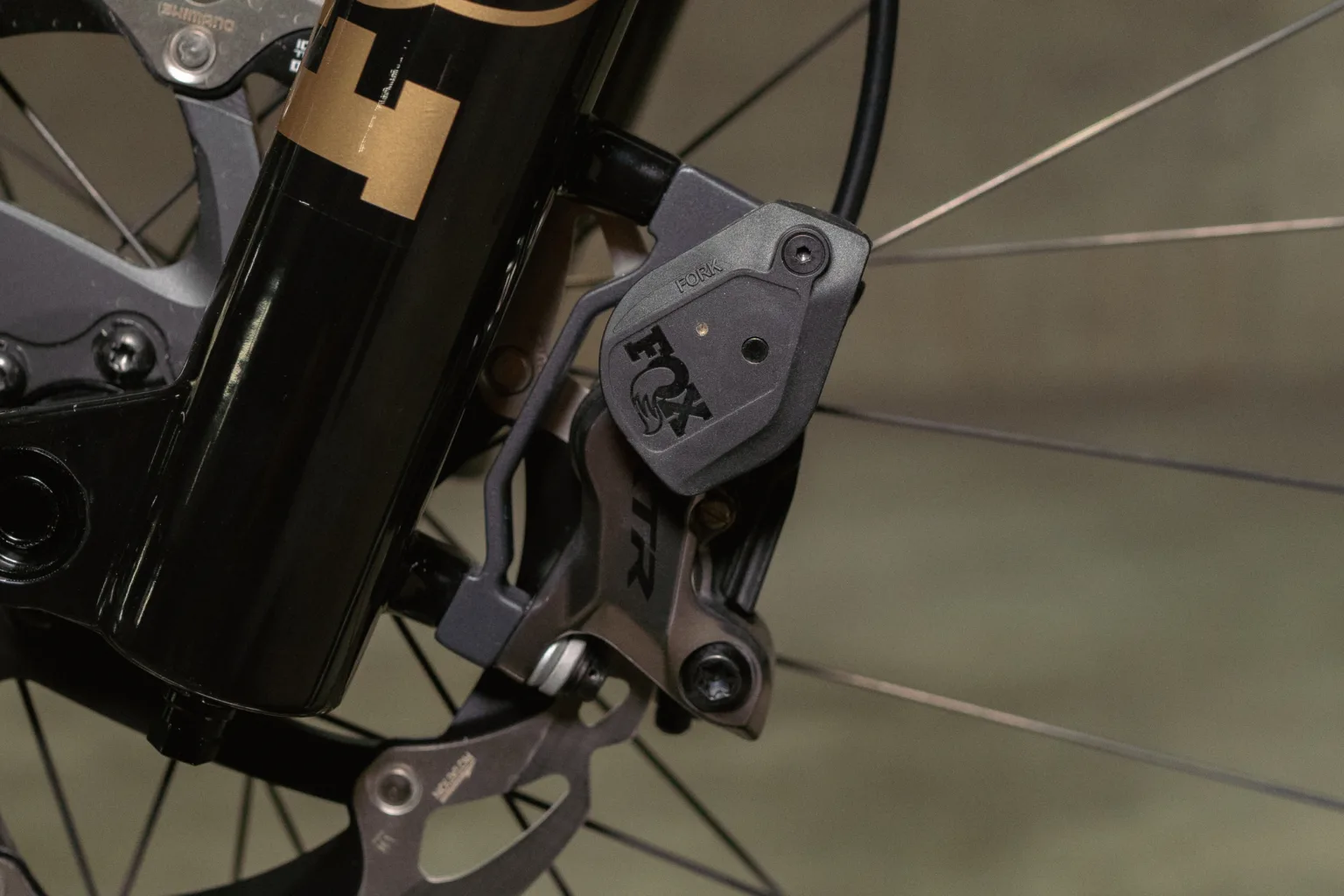


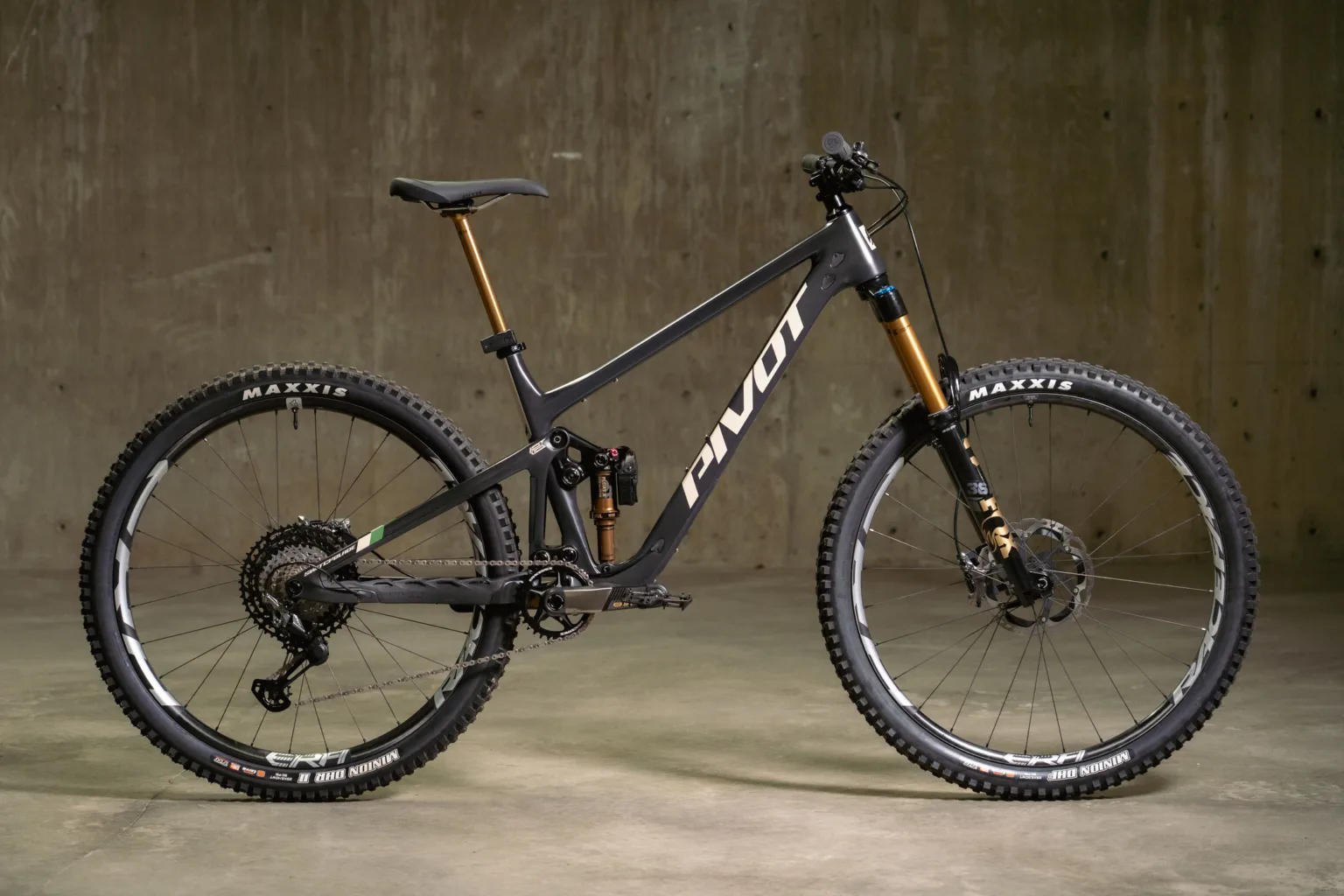
The Live Valve Neo shocks only have two modes, Open and Firm. Because the system can switch back and forth almost instantly, there’s no need for a middle setting. With a sensor on the front and rear brake, each only transmits a signal when the shock needs to open.
After receiving that command, Neo opens the 2-position magnetic latching solenoid and allows the shock to work unimpeded. At that point, Neo also starts a timer. If the sensors transmit another signal to open during that timer, it resets and starts again. If the sensors don’t send any more signals because the trail has smoothed out, the timer expires and the solenoid closes to firm the shock. The controller is also programmed to detect when the bike goes airborne, immediately opening the shock to absorb the landing.
Fox Bike App
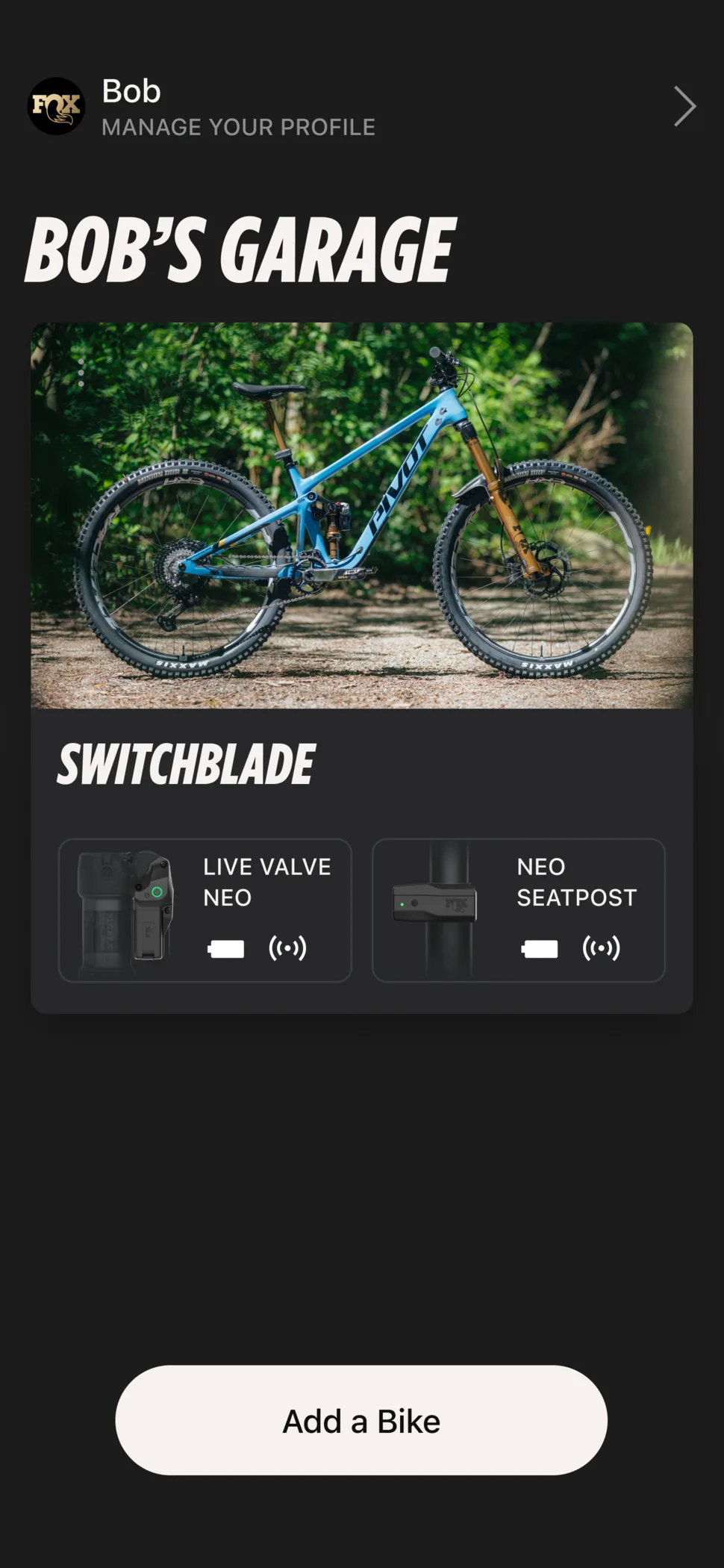
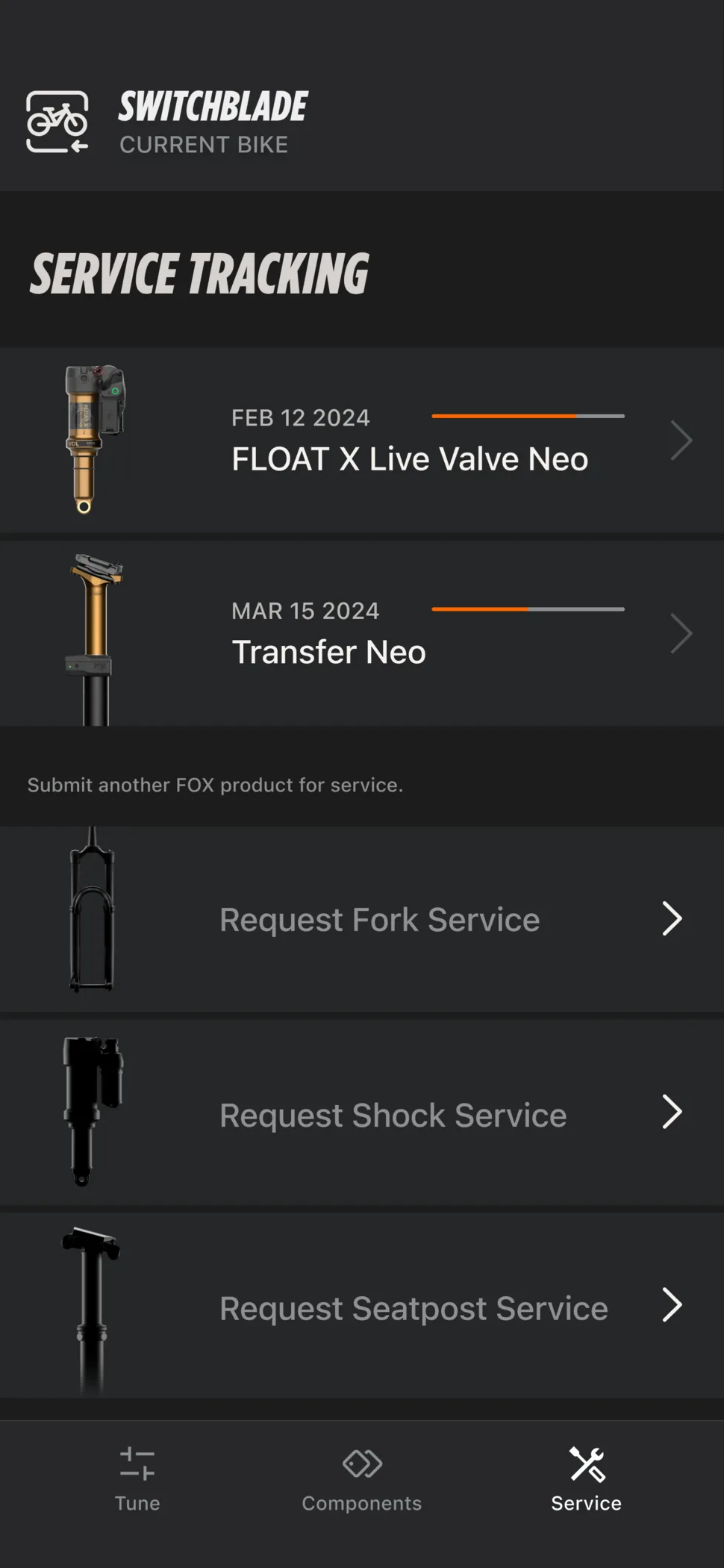
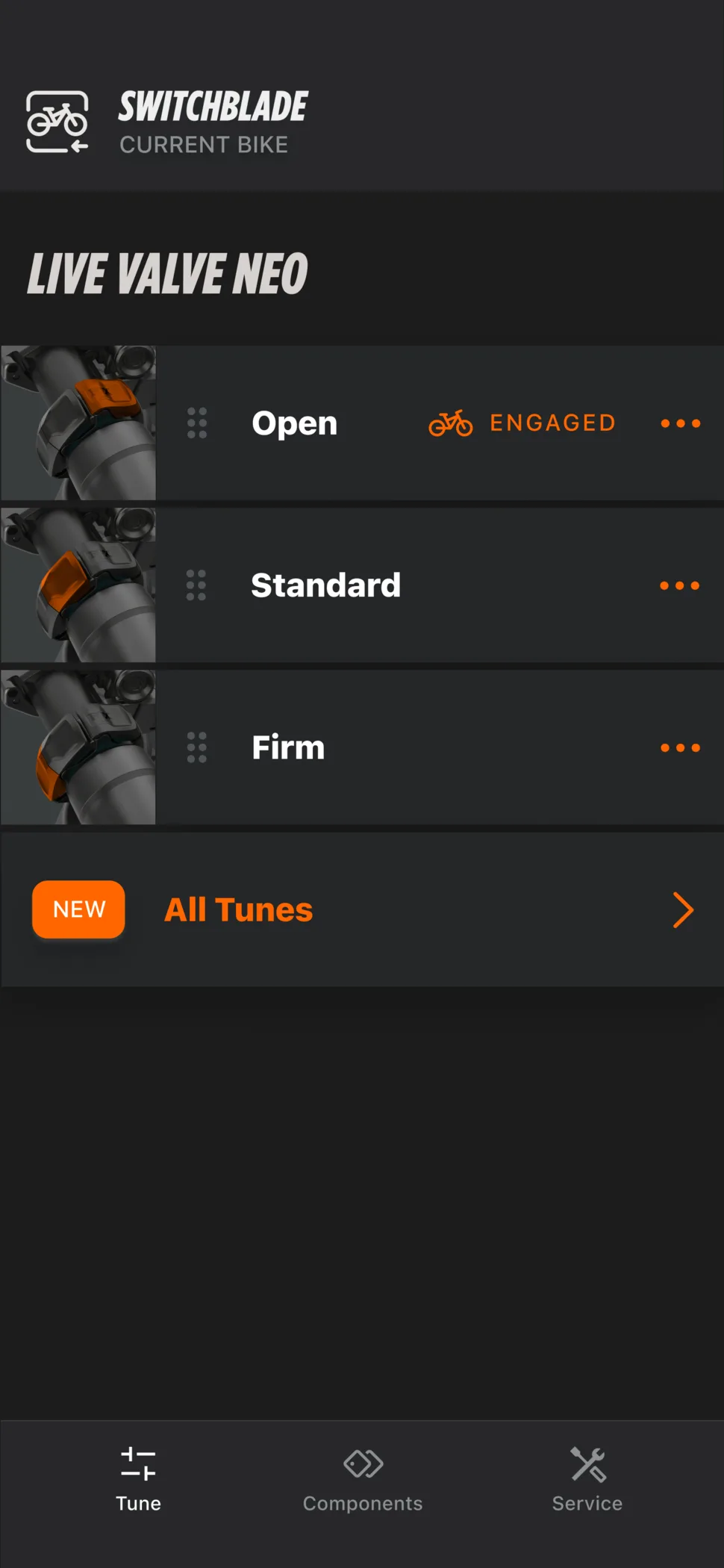
You don’t need it while you’re actively riding, but the Fox Bike App allows you to customize the suspension, save suspension settings, and even track service based on actual use.
Neo-equipped shocks include five stock tunes, each with three states for Climb, Flat, and Descend. Within each one of these states is a force threshold that you have to surpass to open the shock, and a timer for how long the shock will stay open. Standard tune is the one that will be for most riders in all terrains. Firm and Plush tunes allow riders to err to the firmer or plusher side for their liking, and Open keeps it open all the time, while Closed keeps it closed all the time except when landing a drop or jump.
In addition to these five tunes which are set up and ready to go, riders can create their own tunes using Precision Mode to individually control every metric. The app can store infinite tunes, and you can share them with friends around the world through the app.
It seems that three ‘Active’ tunes are quickly accessible through the button on the rear shock, while additional tunes can be loaded through the app. The shock also has a tool-free Firm Mode adjuster with seven positions to control the firmness of the shock platform when the solenoid is closed.
Cold Weather Performance
Fox specifically calls out cold weather performance with Neo stating, “The Live Valve Neo Controller will increase the energy used by the solenoid during colder environmental temperatures to ensure sustained activity in the system.” This sounds like it uses more power to create heat which will keep the oil at a consistent operating temperature. Fox does state that cold weather use will drain the battery faster.
Shocks
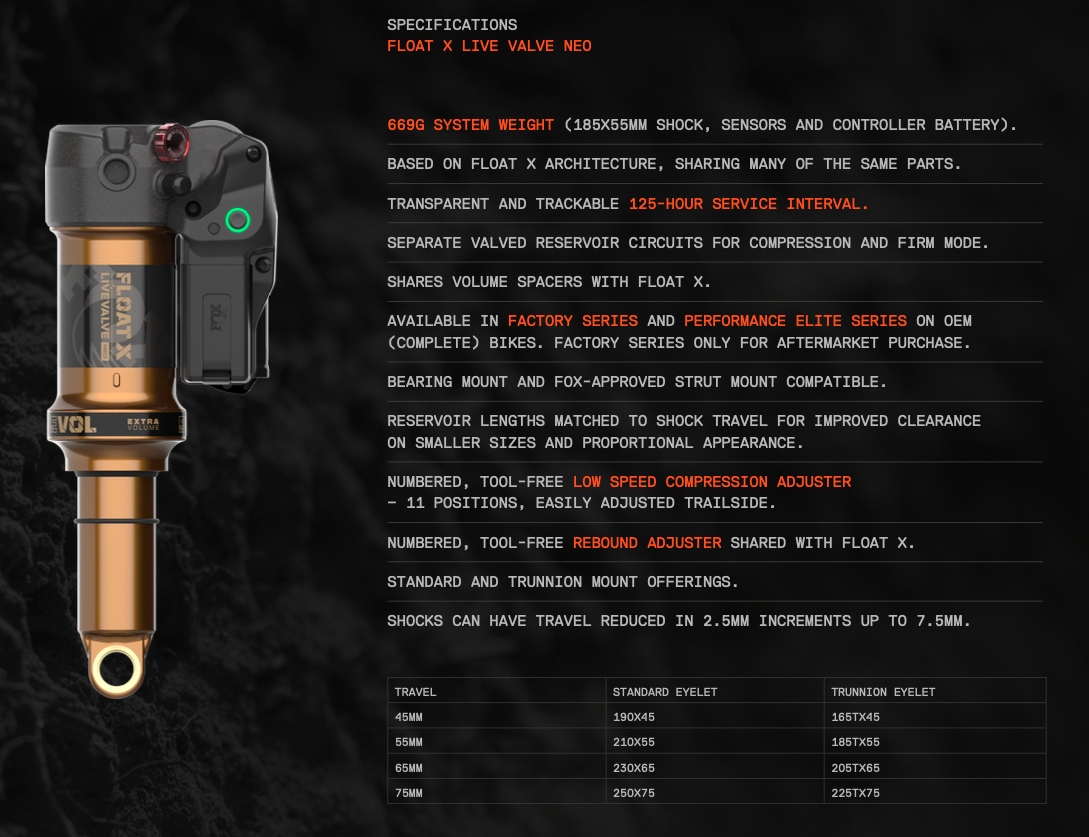
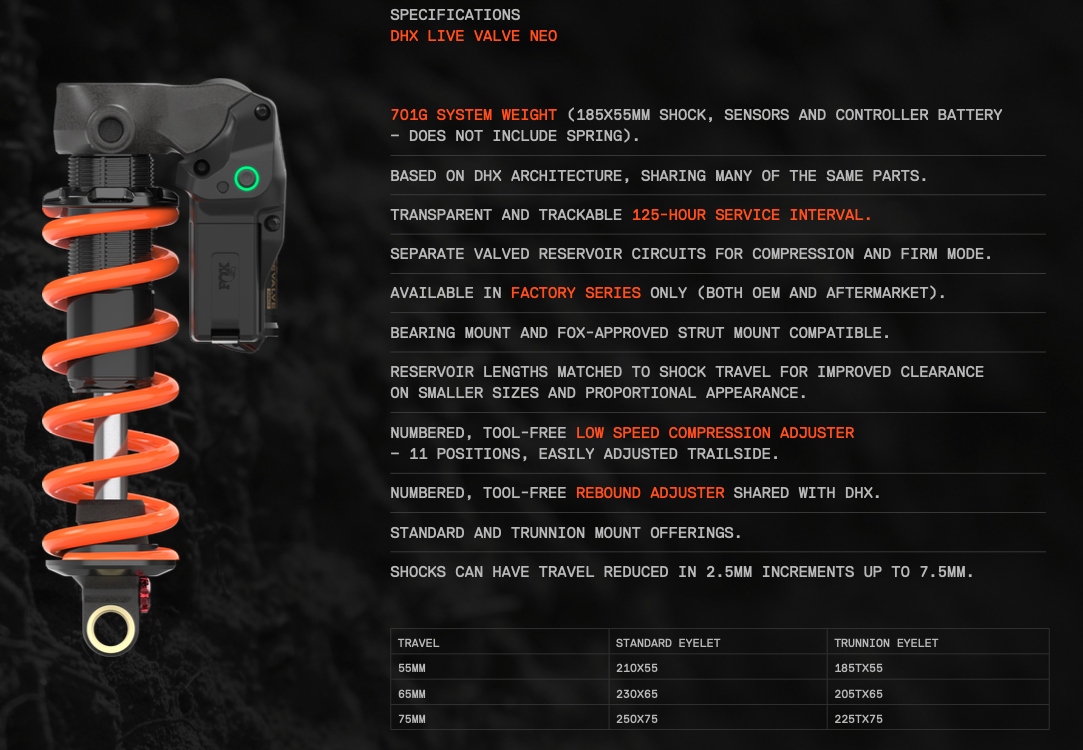
Initially, Live Valve NEo will be available on the Float X air and the DHX coil shocks in both standard and Trunnion eyelet mounts. To us, it makes the DHX coil especially intriguing considering it should offer an incredible balance of coil performance and pedal platform, while only adding 22g over the air shock.
Complete bikes will include Live Valve Neo in the future, but since it’s just a shock and two easily mounted sensors, it will also be offered as an upgrade for existing bikes. The Live Valve Neo kit includes one rechargeable battery & cover, one Fork Sensor & CR2032 battery, one Rear Sensor & CR2032 battery, a FOX battery block, a charging dock & USB-A to USB-C cable, two M6x20mm bolts & two M6x42mm bolts for sensor mounting with standard or oversized rotors.
Compatibility
According to Fox, the Live Valve Neo system is compatible with both regular mountain bikes and eMTBs as long as the shock eye-to-eye and stroke lengths are correct. The Shock stroke can be reduced in 2.5mm increments by up to 7.5mm.
As far as the sensors are concerned, the Bump sensors as Fox calls them are known to be compatible with current Shimano and SRAM production MTB brakes. They’re also compatible with Magura MT7 and TRP DHR Evo, and likely with more Magura and TRP models, though the fit has not been confirmed on any other models at this time.
The only brakes that Fox mentions that are specifically incompatible are those with outboard hose fittings or protruding brake bleed fittings like the older Shimano Deore XT 8000.
Handlebar Switch Coming Soon
Fox mentions in the press release that they’re working on a Handlebar Switch that will be released sometime in 2025. This will let riders switch between Neo tunes on the fly, and it’s “in the final stages of development.”
Live Valve Neo Pricing
Live Valve Neo Product Pricing – For a
complete system, you need the Neo Kit and Shock of your choice
- Live Valve Neo Kit (includes Fork and Rear Bump Sensors, Battery, Charger, Charger Cable): $ 399 USD / $ 534.65 CAD / £449.99 GBP / € 499 EUR*
- Live Valve Neo Float X MSRP: $ 999USD / $ 1399 CAD / £1119 GBP* / € 1299 EUR*
- Live Valve Neo DHX MSRP: $ 949 USD / $ 1269 CAD / £1099 GBP* / € 1249 EUR*
Spare/Replacement Part Pricing
- Neo Spare Battery MSRP: $79 USD / $106 CAD / £99.95 GBP* / €99 EUR*
- Spare Charger and Cable MSRP: $49 USD / $69 CAD / £62.95 GBP* / €79 EUR*
*Price includes VAT
